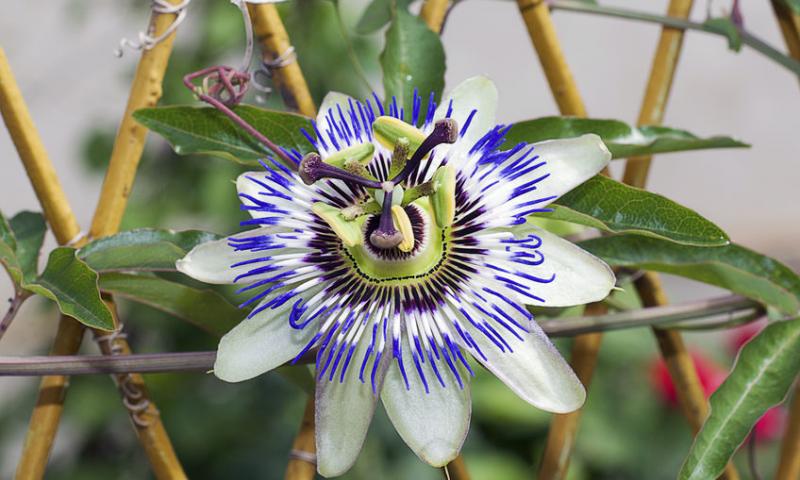 />
/>
COMMON NAME: Passion Flower
LATIN NAME: Passiflora Incarnata
HINDI NAME: Jhumkalata
HABITAT: In the wild, this plant is found mainly in the tropics of America, less often in Asia, Australia and New Zealand. Passion Flower mostly grows in tropical forests, and often form impenetrable thickets.
ORIGIN: Peru, South America
BOTANICAL INFORMATION: Red-white Passion flower, also known as Passiflora (lat.Passiflora incarnate L.) belongs to the largest Passifloraceae family, including about 400 species of herbaceous or woody vines, distributed mainly way in the tropics and subtropics of South America.
Passion Flower, or Passiflora, is a grassy vine that leads the climbing lifestyle with the help of tendrils. In this case, the tendrils, first stretch out, make circular movements in search of support, then tightly wrap around it and pull the entire plant up. The flowers have a strong odor and unusual structure. They are also quite large. Indeed, Passion Flower is rather complicated in structure, unlike any other among angiosperms. Inside the wide-open, brightly colored double perianth, there is an even brighter crown of narrow long petal-shaped lobes.
Various insects and birds pollinate the plant, in particular violet-ear. A great adaptation of a flower is the ability to self-pollination, if for some reason, cross-pollination has not occurred. The fruit is a berry. The seeds are with endosperm and fleshy aryllus, flattened, with sculptured seed skin. Passion Flower blooms from the beginning of summer until autumn.
CHEMICAL COMPOSITION:
The composition of this plant is quite rich and diverse. The plant has a large group of flavonoids (C - glycosides of apigenin and luteolin), alkaloids (garman, norgarman, garmin), coumarins, quinones. In addition, it contains sugars, polysaccharides, free amino acids, glycoproteins. In the rhizomes, there were found glycosides of the flavono group.
HISTORY:
Passiflora was of great interest as a beautiful ornamental plant in botanical gardens.
The aesthetic qualities of Passion Flower have also been valued since ancient times, as early as in 1610, drawings of this plant were brought to Europe from the New World by Giacomo Bocci.
The Spanish missionaries saw in some parts of Passion Flower “the instrument of “The Lord’s passions”, identifying the perianth crown with a thorny wreath, and the stamens and pestle with instruments of torture.
The fruits of several dozen types of Passion Flower are appreciated for their taste, aroma and "vitamin" composition.
*This article is for informational purposes only. We suggest consulting a physician before using these or any other herbal supplements.
